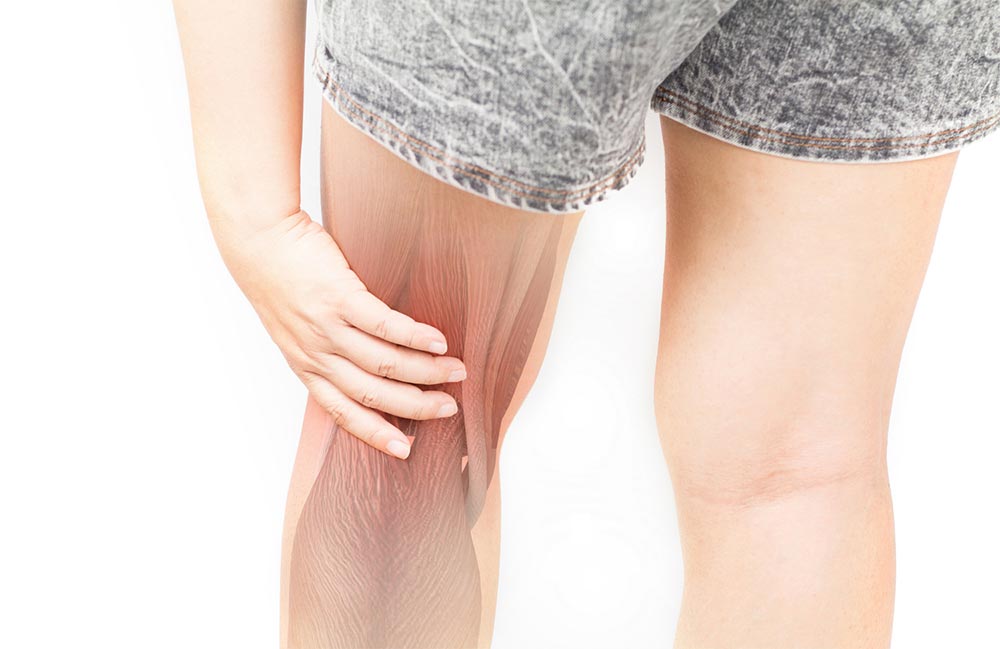Table of Contents
What is Osteoarthritis?
Osteoarthritis is an inflammation of the joint. This happens when the end of the two bones meet. Professionals called this a generative joint disease, or wear and tear. This condition develops through time as people age.
Signs and symptoms
People with this condition usually feel pain or stiffness in their joints. The pain is caused by the damaged cartilage which supports the movement of the bones. The cartilage is a soft and slippery tissue located at the end of the bones that prevents the two bones from rubbing with each other.
- Swelling around the joint
- Cracking sound when the joint moves.
- Reduces the rage of motion, especially when you are moving your joints.
- Weakness of the muscles.
Osteoarthritis may occur in all joints, but most likely this condition commonly affects the joints in the arms, hands, knees, and back.
There are two different types of osteoarthritis (OA): the Primary and the Secondary. These two types of osteoarthritis have the same symptoms but different causes. When the cartilage of the joint breaks down or tears, this causes the bones to rub with each other, inflaming the joint.
Primary Osteoarthritis
This condition is a wear and tear in the joint as people age. A person may feel the symptoms at the age of 55 to 60. Everyone may experience cartilage damage through time, but the severity of the condition may vary in the lifestyle of a person.
Secondary Osteoarthritis
This is a condition in which accidents or the lifestyle of a person may trigger cartilage damage. Some factors include;
- Accidents – Fracture in the bones may trigger cartilage breakdown.
- Obesity – Research says that every extra body weight adds pressure and weight to the knees. This may cause the cartilage to be damaged and or to develop arthritis.
Sedentary lifestyle – Inactivity may cause a person’s muscles to weaken and increase the chances of obesity.
What are the risk factors of osteoarthritis?
Osteoarthritis can be caused by a number of reasons. Risk factors may differ based on the joint condition.
Being older and female are both major risk factors for primary osteoarthritis. Primary osteoarthritis affects men and women equally under the age of 55 but is more frequent in women above the age of 55.
A close relative suffering from osteoarthritis or a family history of the illness is also a risk factor for primary osteoarthritis. The majority of persons with primary osteoarthritis have a family relative who has the ailment, according to the Cleveland clinic.
Treatment
Osteoarthritis cannot be treated. But therapies and proper medication, and diet will help you feel and move better.
- Physical Therapy – Strengthening the muscles around the joint may help lessen the pain, and flexibility exercise improves the range of motion. Regular physical activity such as low-impact exercises such as walking, running, and swimming will help you improve your condition.
- Diet – According to the Arthritis Foundation, eating healthy food and nutritional supplements does cure osteoarthritis. It helps improve the condition of the patient. Healthy food has anti-inflammatory chemicals that can reduce the risk of causing pain. Reduce eating high fat and high cholesterol food.
- Exercise – Being obese causes pressure on the joint that may lead to inflammation. Low impact exercises such as walking, yoga, swimming, and strengthening the muscle near the affected area will help you with your condition.
- Intermittent hot and cold compress – This exercise will reduce the swelling and inflammation of the affected area.
- Vitamins and Supplements – Natural supplements such as boswellia serrata, curcumin, avocado, soybean extract, and willow bark are anti-inflammatory. They help you recover faster. Taking antioxidants and vitamins A, C, and E may prevent damage to your joints.
- Surgery – If oral medical treatment and natural medicines do not work, surgery may be beneficial to relieve pain and restore the condition of your joint.
The goals of the treatment are:
- To delay progression, decrease or stop joint pain and stiffness
- Improve movement and range of motion
- Increase the quality of life of the patient
Recommended foods to eat
- Oily fish such as sardines, mackerel, salmon and tuna, which are rich in omega 3 fatty acids.
- Broccoli contains sulforaphane, which the researchers believed that broccoli could slow down osteoarthritis
- Nuts which are good for the heart and have a high level of calcium. They also contains alpha-linolenic acid to boost your immune system.
Osteoarthritis is a medical condition that may affect your movement and way of life, caused by an unhealthy lifestyle, accidents, unhealthy habits or, most of the time, because of aging.
Doing regular exercise and eating a balanced diet with proper nutrition, vitamins and supplements may reduce the risk of having this generative joint disease. You can also join osteoarthritis clinical trials for more information and for consultations on combatting osteoarthritis.

